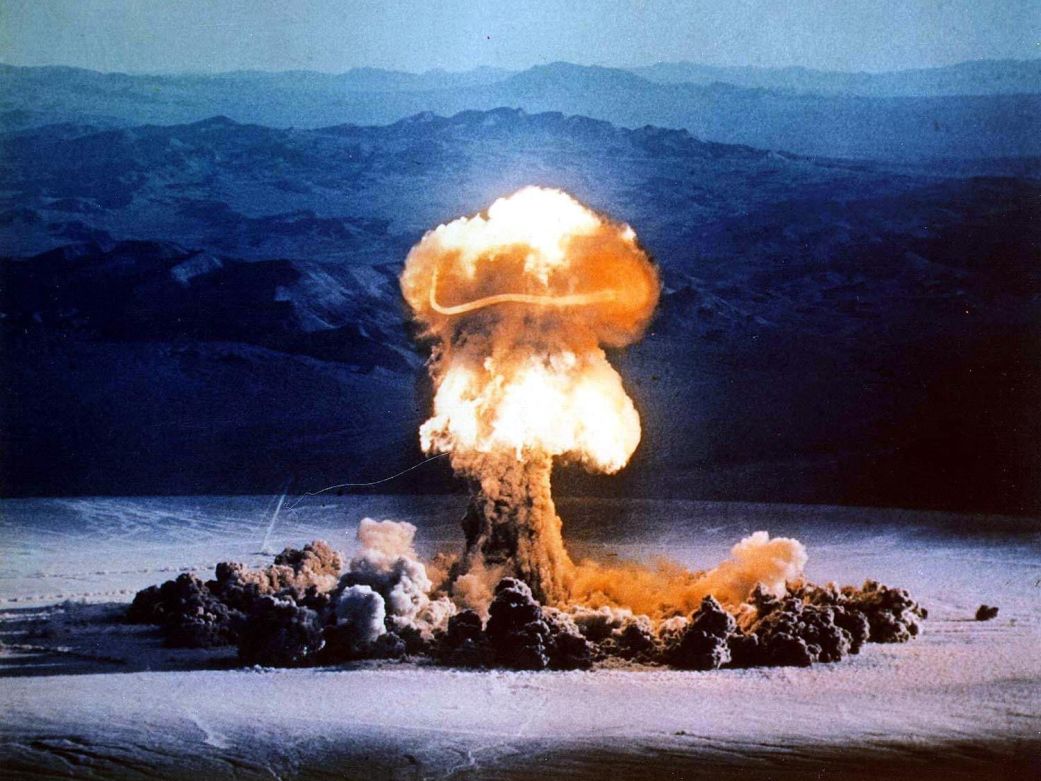In a move that has sent shockwaves through global security circles, President Donald Trump has ordered the Pentagon to immediately resume nuclear weapons testing for the first time since 1992. Announced via a Truth Social post on October 30, the directive calls for the U.S. to test its arsenal “on an equal basis” with adversaries like Russia and China.
Coming amid escalating tensions with major powers, this decision revives a Cold War-era practice fraught with environmental, diplomatic, and existential risks. As the world digests the implications, experts warn it could unravel decades of arms control and propel humanity closer to a new nuclear arms race.
The Announcement: A Blunt Call to Arms
President Trump’s statement was characteristically direct: “Because of other countries’ testing programs, I have instructed the Department of War [a nod to his preference for the pre-1949 name] to start testing our Nuclear Weapons on an equal basis. That process will begin immediately.” Posted from Gyeongju, South Korea, during an international summit, the order preceded a high-stakes meeting with Chinese President Xi Jinping by mere hours. It also followed Russian President Vladimir Putin’s announcement of two new nuclear weapons system tests, including intercontinental ballistic missile launches from the Plesetsk Space Center to Kamchatka.
The timing was no coincidence. U.S. officials, speaking anonymously to Reuters, described it as a “message” to Beijing and Moscow, signaling America’s unwillingness to lag in nuclear capabilities. Trump’s post echoed his first-term rhetoric, where he frequently touted nuclear modernization as essential to “peace through strength.” Yet, this escalates beyond upgrades—it’s a full-throated revival of explosive detonations, dormant under a voluntary U.S. moratorium since the last test at Nevada’s Yucca Flat on September 23, 1992.
What Does Nuclear Testing Entail—and Why Has It Been Paused?
Nuclear testing involves detonating atomic or thermonuclear devices to verify weapon reliability, design, and yield. Historically, the U.S. conducted over 1,000 tests between 1945 and 1992, mostly in Nevada and the Pacific, amassing data on everything from warhead efficiency to delivery systems. These explosions, often underground to contain fallout, still released radioactive particles into the atmosphere, soil, and water.
The 1992 moratorium stemmed from mounting concerns: environmental devastation, health risks to downwind populations (like Utah’s “downwinders” suffering elevated cancer rates), and diplomatic pressure. In 1996, the UN’s Comprehensive Nuclear-Test-Ban Treaty (CTBT) banned all explosive tests, though the U.S. signed but never ratified it—citing verification gaps and the need for “stockpile stewardship.” Under this program, the U.S. maintains its arsenal through computer simulations, subcritical (non-explosive) experiments, and laser-induced fusion tests at facilities like Lawrence Livermore National Laboratory. These methods have certified the reliability of America’s 3,700 warheads without a single full-yield detonation in over three decades.
Trump’s order challenges this status quo. A Congressional Research Service report from August 2025 estimates it would take 24 to 36 months to prepare a test site, calibrate instruments, and execute a detonation—despite the “immediate” framing. The Pentagon has already begun preliminary assessments at Nevada and possibly Amchitka Island in Alaska, per leaked memos cited by The Washington Post.
The Ramifications: A Pandora’s Box of Global Peril
Resuming tests carries profound consequences across multiple fronts.
Strategic and Military Impacts: Proponents, including Trump allies in the defense hawks’ camp, argue it’s vital for deterrence. Russia’s recent Yars and Sineva missile tests, coupled with China’s hypersonic advancements, have fueled claims that U.S. weapons—aging since the Cold War—may underperform without real-world validation. “Simulation isn’t perfection,” Defense Secretary nominee Pete Hegseth said in a Fox News interview. A successful test could greenlight new designs, like low-yield tactical nukes for battlefield use, potentially lowering the threshold for nuclear conflict.
Critics, however, see folly. The Bulletin of the Atomic Scientists’ Doomsday Clock, already at 90 seconds to midnight, could tick closer. Daryl Kimball of the Arms Control Association warns that U.S. tests would “embolden” Russia and China to accelerate their programs, while pressuring allies like India and Pakistan to follow suit. North Korea, which conducted its last test in 2017, might justify more. Globally, it undermines the CTBT’s near-universal norm—ratified by 178 nations—potentially collapsing nonproliferation efforts.
Environmental and Health Toll: Each test risks fallout plumes carrying cesium-137 and strontium-90, linked to leukemia and thyroid cancers. The 1963 Partial Test Ban Treaty shifted blasts underground, but Nevada’s aquifer contamination persists, with cleanup costs exceeding $5 billion. Indigenous communities near test sites, like the Western Shoshone, decry it as “nuclear colonialism.” Climate scientists add that explosions could aerosolize particulates, exacerbating global warming—ironic for a president who dismissed such concerns.
Diplomatic Fallout: Allies are reeling. European leaders, per a joint statement from France and Germany, called it “regrettable” and a “setback for multilateralism.” At the UN, non-aligned nations fear a testing domino effect in the Middle East. Domestically, it divides: Senate Democrats, led by Adam Schiff, vow to block funding, while Republicans cheer it as “America First” resolve. Public reaction on X (formerly Twitter) ranges from doomsday memes to patriotic fervor, with hashtags like #TrumpNukes trending amid conspiracy theories of an impending “worldwide reset.”
Economically, it’s a boon for contractors like Lockheed Martin, whose stock surged 4% post-announcement, but taxpayers face billions in added defense spending—diverted from social programs.
Why Now? Geopolitics, Posturing, and Power Plays
The “why now” boils down to a perfect storm of threats and opportunities. Russia’s Ukraine invasion and nuclear saber-rattling—evident in Putin’s October exercises—have exposed perceived U.S. vulnerabilities. China’s rapid arsenal growth, from 350 to over 500 warheads since 2020 (per Pentagon estimates), amplifies fears of asymmetry. Trump’s directive, timed before his Xi summit, reads as brinkmanship: a bid to extract concessions on trade, Taiwan, or fentanyl flows by reminding Beijing of America’s nuclear primacy.
Broader context includes Trump’s domestic agenda. With midterm elections looming and approval ratings buoyed by economic wins, this plays to his base’s appetite for muscular foreign policy. It’s also a legacy flex—reversing Biden-era restraint and fulfilling 2024 campaign pledges for nuclear supremacy. As one X post from a MAGA supporter quipped, “Let the tearing of clothes and gnashing of teeth begin!”—capturing the polarized glee.
Yet, experts like those at CNN note factual inaccuracies in Trump’s rationale: No nation has conducted a full nuclear test since North Korea’s 2017 blast. Russia’s “tests” were non-explosive launches; China’s remain simulated. This suggests the order is more theater than necessity, a Trumpian art of the deal on steroids.
Looking Ahead: A World on the Brink?
President Trump’s nuclear testing order isn’t just policy—it’s a gauntlet thrown into an already volatile arena. It promises to validate America’s might but risks igniting a chain reaction of proliferation, pollution, and peril. As the Pentagon gears up, the international community watches warily. Will this deter foes or invite catastrophe? History, scarred by Hiroshima and Bikini Atoll, offers grim precedents. For now, the fate of the CTBT—and perhaps global stability—hangs in the balance, a stark reminder that in the nuclear age, “equal basis” might mean mutually assured destruction.










Share:
Biden’s Autopen Pardons: Legally Void, Morally Bankrupt, and a Constitutional Travesty
Trump-Xi Breakthrough: Tariff Cuts and Rare Earth Reprieve Signal US-China Trade Thaw